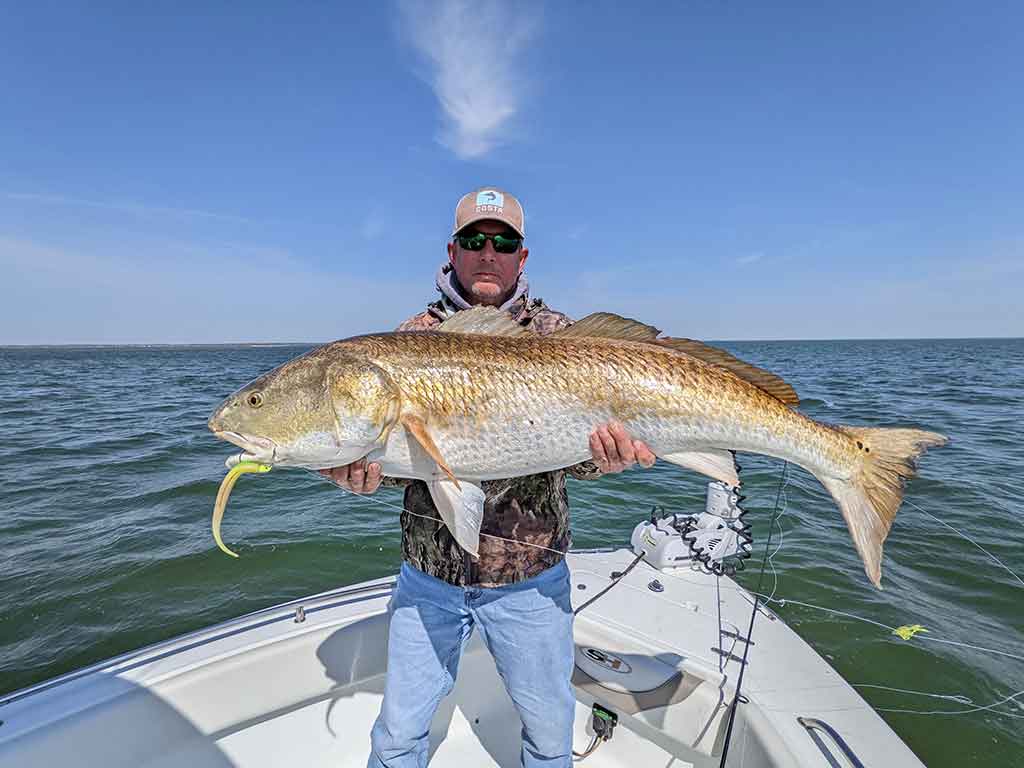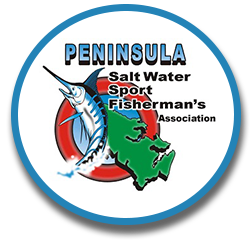
OFFSHORE FISHING
Offshore Fishing from Oregon Inlet by Craige Stallings
One of my favorite things to do is tuna fish out of Oregon Inlet. I will fish out of there just about year round when the tuna are present. The only time I do not fish out of there is when the ocean water gets too hot for tuna (usually late July, August, and September). Being successful at tuna fishing is the most challenging type of fishing I’ve tried in my 45 years of fishing. The ocean is very big and the tuna are highly migratory, but there are places that they hang out consistently during certain times of the year. I have fished from Hatteras to the Washington Canyon, but I am the most successful fishing out of Oregon Inlet.
It is very important to do your homework before you venture into the ocean. Having a suitable and reliable boat is essential. I fished OI for years in a 23′ CC Wellcraft and I currently fish in a 26′ Albemarle CC. I feel a lot more comfortable in the Albemarle than I did in the Wellcraft. So you have a suitable boat (22′ or better) that carries enough fuel to run 50 miles offshore, troll all day and return with fuel to spare, now you need to decide when to go and where to go. I watch the weather very carefully and when I see a weather pattern developing that will call for seas to be 2′ to 5′ offshore and winds not more than 15 knots out of the NW, SW, S, or SE, then I will consider a tuna trip. Please remember that a north wind blowing against the Gulf Stream (which moves from the South to North) will really chop things up offshore. An E or NE swell can make OI itself VERY DANGEROUS with an outgoing tide. If I am considering a trip on Saturday, on Thursday evening I will call the National Weather Service in Morehead, 252-223-5737 and press # “7”, and you will get to talk to a real weatherman and you can ask him questions. I will call the weatherman again on Friday after 4 P.M. to get the latest forecast for Saturday. If the weather is good, then we are set to trailer down and fish. My targeted fish will be tuna, but I will also be prepared to catch dolphin or seabass if I cannot find the tuna. Checking the web sites of Oregon Inlet and Pirates Cove will give you a pretty good idea about what is being caught by the Charter Boys. I do not try and outguess the guys that are fishing for a living.
The OI fleet will usually leave around 5:30 A.M.. I will usually wait until the fleet gets started and just follow along. Looking at the Rutgers University web site will give you a good idea of where the Gulf Stream is located. I like to fish where there is a good break between the Gulf Stream water, cooler inshore water, and the edge of 100 fathoms. Usually the Charter Fleet will fish the area where they last caught fish. The Fleet will usually be talking on VHF Channels 80, 79, 78, 72, 71, 68, and 69. I usually scan those channels and listen for bits of information about where the temperature breaks are and who is catching and the location. The Charter Captains talk in Loran Numbers. So, if you do not have a loran or a GPS that converts to loran numbers, then you are at a big disadvantage. Some popular spots include the 630 Hole, the Point, 590, the 530 Hole, the 1250 Rock, 26810, 40410 and the 280 Rock. Sorry about the loran numbers, that is the way my brain works. Most tuna are caught in the area within a quarter of a mile from the edge of the 100 fathom line. I like to zigzag back and forth across the 100 fathom line. I will also fish parallel to a current line (weed line) or along a temperature break. I will rarely fish for tuna in water less than 300′. A good chart plotter and track plotter is very helpful. If you get a nibble, mark the location. Catch a few tuna, then stay in that area and work it. Note where you had the nibble (temperature break?, current rip?, on the edge of the 100? on top of a rock?, etc.). Mark every tuna that you catch. A pattern should develop. Tuna (yellowfin) like water around the low to mid 70s. Look for birds, sharks, bait, etc. that may indicate life in the area. Weed lines or scattered grass can hold bait and tuna. You have to look for something that is a little out of the ordinary and that is where you should fish. Drop offs and hills can also be productive.
As for tackle, a 6/0 Penn to a 50 International is OK. I would recommend 80 lb. line and 15 to 20 pounds of drag (set by scale each trip). If you are going to chunk, then a smaller reel and 40 lb. test line will work, just set the drag as about 13 pounds by scale. Most tuna out of OI are caught trolling, but I will usually have some bait that I can chunk, if the situation presents itself. Most of the time we troll at least six rods. We use ballyhoo most of the time rigged with a seawitch or small blue/white Islander. A natural cedar plug pulled about 40′ behind the boat can be productive. One or two daisy chains can also generate tuna activity. If something works, then do not change it. Most of our tuna are caught on the short rigger (a 100′ back) or the flat lines. When you get a nibble, do not crank in all lines, a lot of time you will get a bite on “floaters” (baits left in the water). If you get three nibbles at once, get some more baits out quick, you just might bring the whole school up to the boat. We usually only crank in the flat lines. Keep the boat in gear as slow as it will go. Leaders on our bait are rarely longer than 9′ and 130 to 150 lb. leader line is standard. We use 100 lb. coast lock swivel. As for ballyhoo, I like the medium size the best, rigged with a 3407 9/0 Mustad hook. This is a long shank hook and I have never had one fail. I have had 40 pound tuna straighten 7/0 hooks at the leader. I also take squid with me and have several rods rigged with a 3-ounce in-line sinker, 6′ of 50 lb. mono, and 5/0 live bait hook in case we find dolphin along a weed line or hiding under a board. A small strip of squid trolled in a tight circle can be deadly on the dolphin.
If I do not find the tuna or dolphin by noon, I will usually try and fish the San Delfino wreck at the 622 line. Most offshore charts will give you the numbers. Just take some 20 ounces sinkers with you, tie on a couple of circle hooks (5/0), locate the wreck, put on some bait (squid, mackerel, false albacore, etc.), and drop down (we use 50 lb. test for our seabass leaders). The seabass, bluefish, grouper, etc. will hook themselves. Just be prepared to do a lot of cranking. The wreck is in 200′. It is over 400′ long and has a lot of structure. Stay near the wreck. Dropping a buoy is helpful, but a good GPS can keep you on top of it. Be prepared to move back to the wreck frequently, because usually there is a lot of current that near to the 100 fathom line. The San Delfino is about 35 miles from the OI sea buoy on only about 4 miles from the 100 fathom line.
In summary, be prepared to fish for several species. Listen to what the Charters are doing. Look for something out of the ordinary. Start fishing the area where the charters start. The charter fleet heads home around 2:30 P.M.. Be careful of the weather and the inlet. Try and buddy up with another boat. Make sure you have a plan if something goes wrong or does not work.
